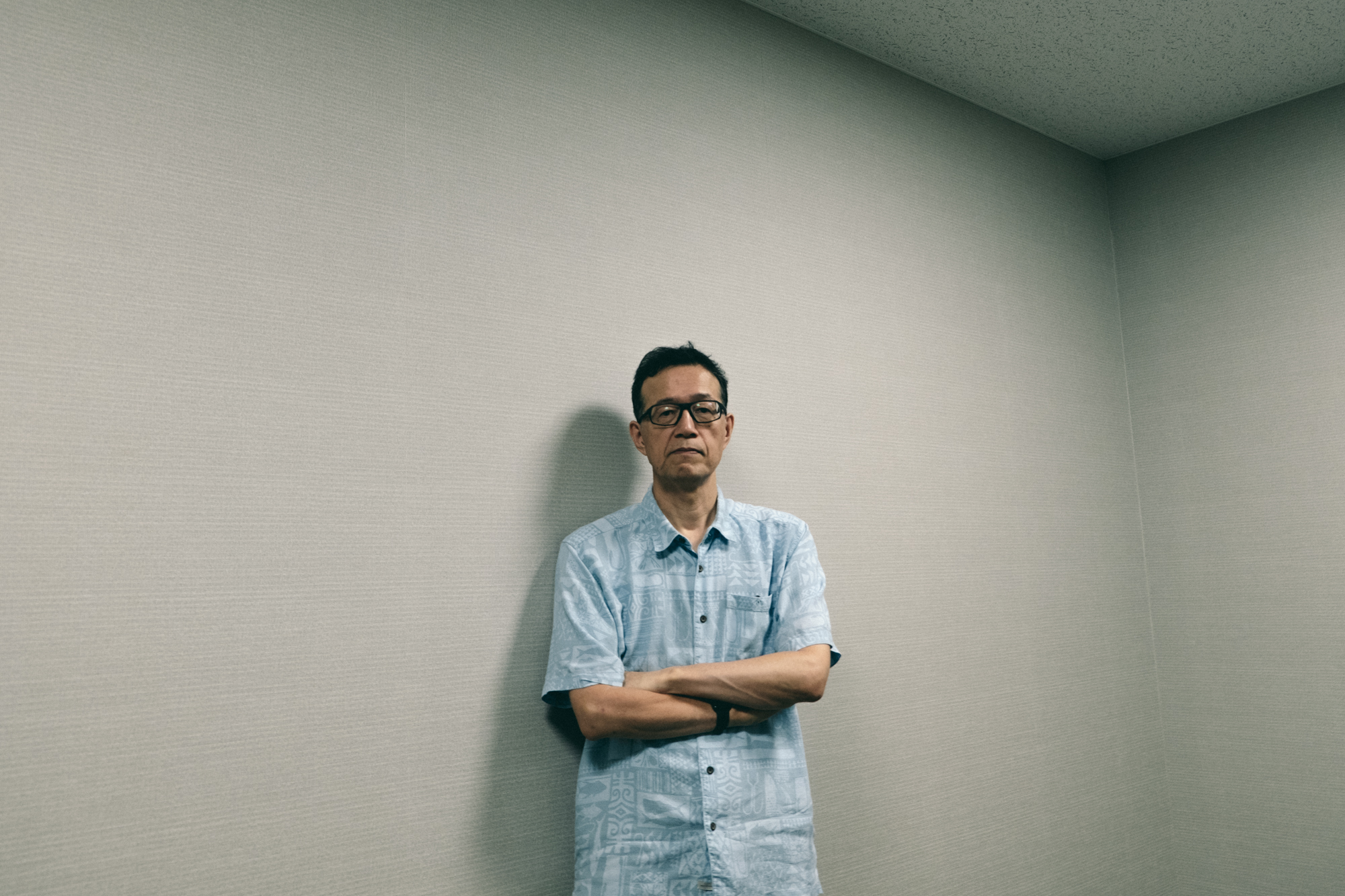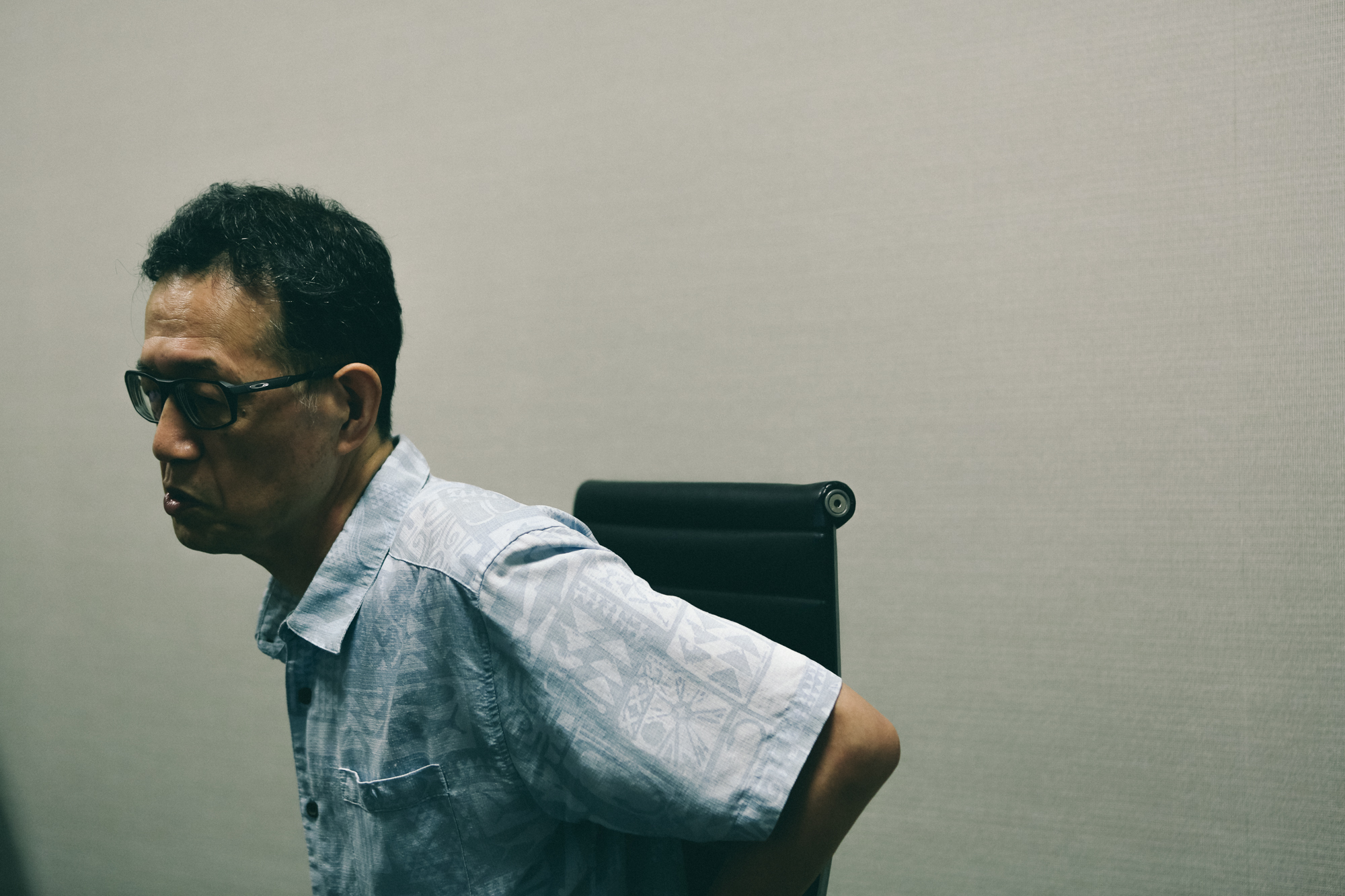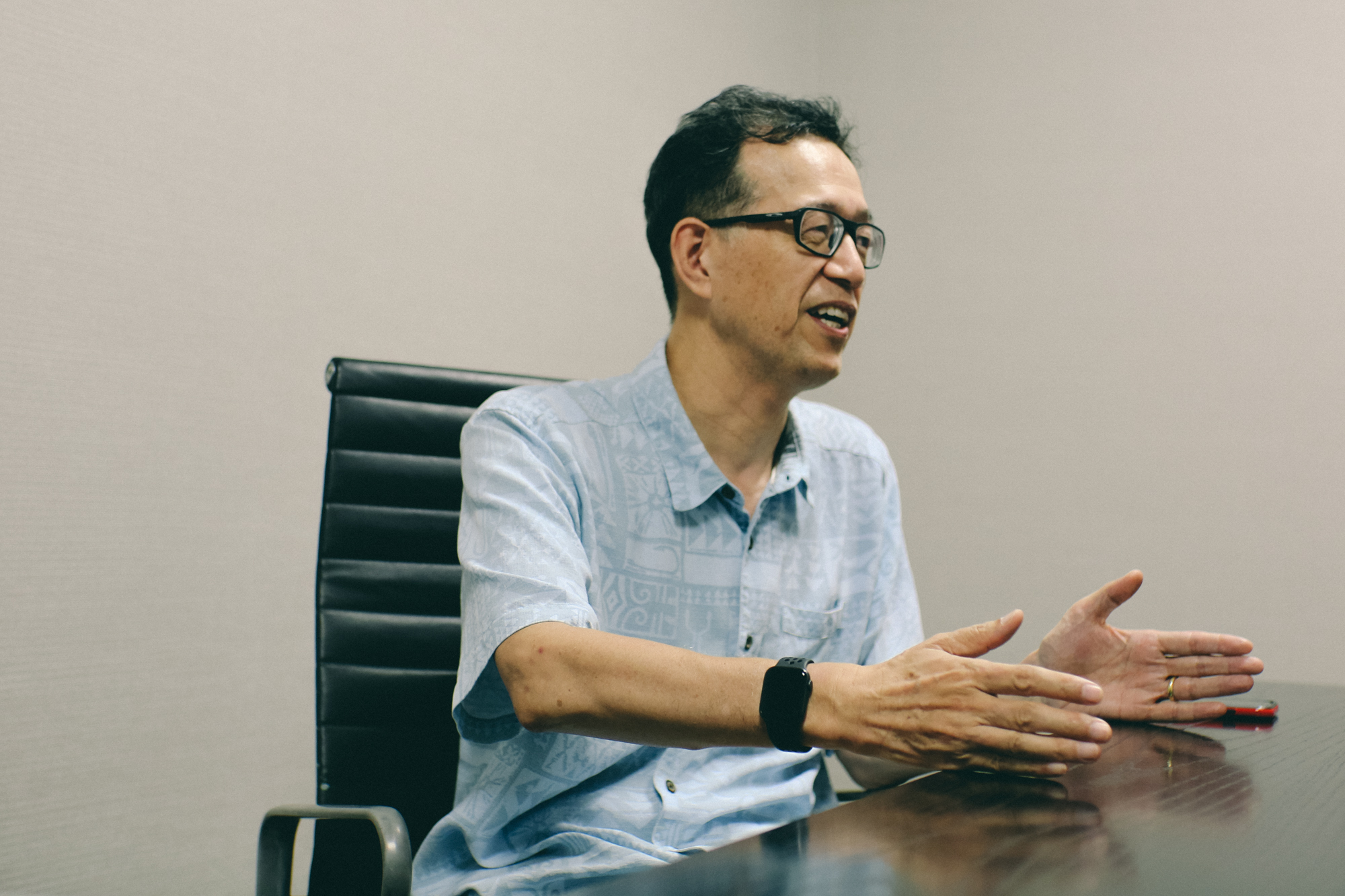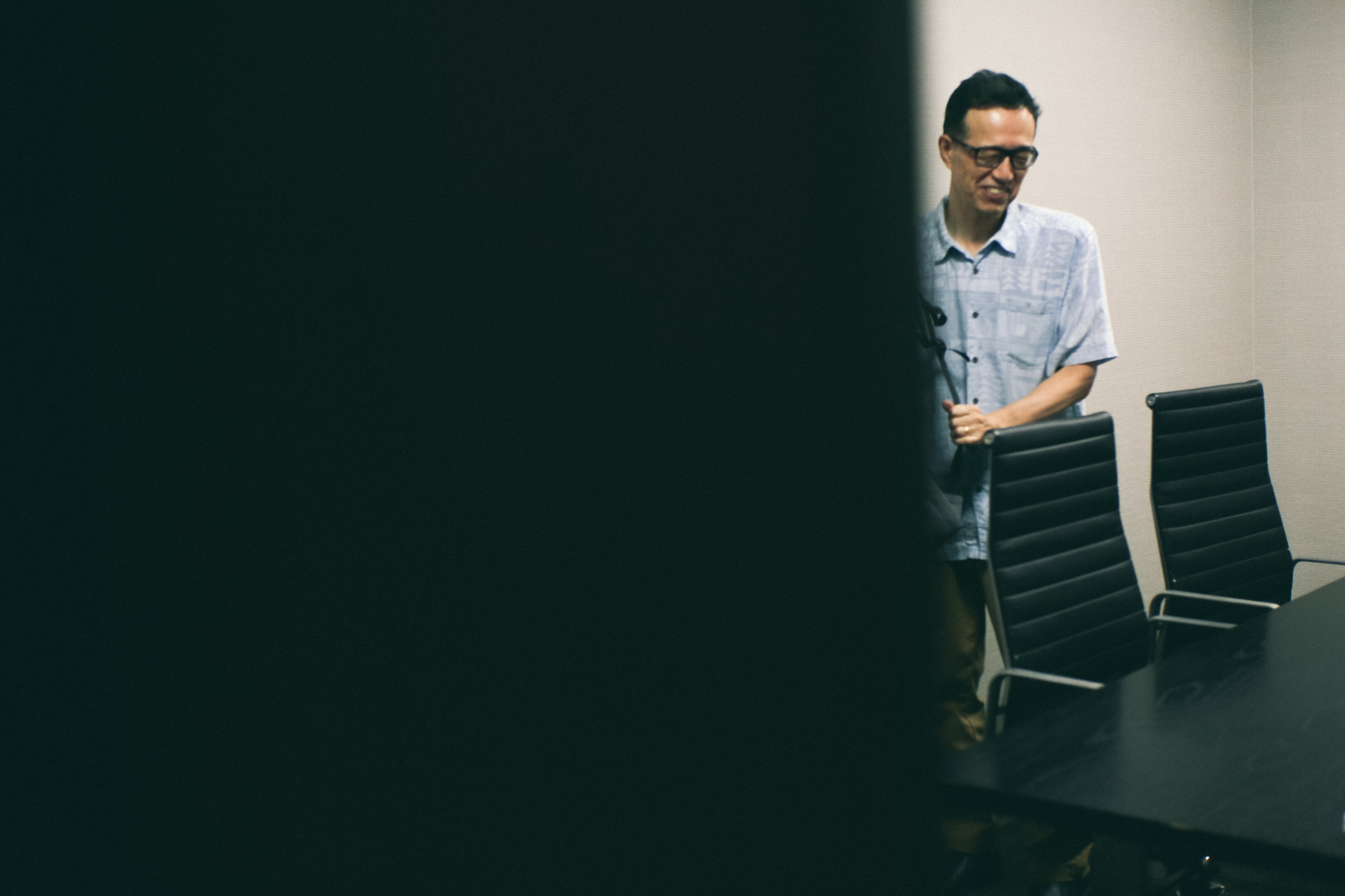
The Compatibility of Shirow’s Works With 3D CG According to Shinji Aramaki: The appeal of “Ghost in the Shell,” unveiled by the latest technology, and its future prospects #03
Text: Satoshi Asahara / Photo: Yusuke Yamatani“I had followed Shirow since he was a dojin fan-manga creator,” says Shinji Aramaki. He directed the 2004 film Appleseed, which garnered attention as the world’s first 3D CG-animated film to incorporate motion capture technology. His proficiency in mechanical designs, coupled with his expertise in enhancing the allure of the original manga through cutting-edge technologies, is evident even in collaborative directorial efforts, such as his work with Kenji Kamiyama on Ghost in the Shell: SAC_2045. Both are works that Aramaki wanted to undertake willingly, but what makes Shirow Masamune’s creations so compelling that inspires such passion from him? In this discussion, we inquired about his enthusiasm for the original works, delving into the challenges and advantages of production work, and exploring the possibility of a sequel in the future.
#03 A Vision of the Second Volume Inspired From a Certain Device
-Having experience with Ghost in the Shell: SAC_2045, what do you feel are some issues and possibilities for 3D CG anime?
Shinji Aramaki (Aramaki): The challenge of 3DCG is ultimately that it cannot surpass the allure of hand-drawn lines. The next step for it comes when we can fully incorporate that sort of “flavor” into the data and synthesize it. There are already animators that effectively incorporate 3D CG into hand-drawn anime, and there are more and more people trying it on their own in Japan. Outside Japan, there are works that toe the line between hand-drawn and CG, like Spider-Man: Into the Spider-Verse, which is hard to call either CG or hand-drawn. I suspect that sort of trend will spread globally. I also personally found the Netflix anime series Arcane inspiring. It’s a CG anime, but things like smoke, light, and fire are all expressed like hand-drawn art. It makes me wonder how they do it, but it’s also good enough as a show that you’ll forget about that sort of thing. That’s the ideal, really. Fusing the appeal of the story and characters with the technical effort. Ghost in the Shell: SAC_2045 was a good challenge for the things we tried for the first time and also showed me issues we could brush up on.

-Pixar movies and similar films seem to put more emphasis on polishing their CG artistic expression than on a hand-drawn feel. I don’t think I’ve seen much from Japan that breaks off from hand-drawn animation so thoroughly. Do you think that’s down to a simple difference of intent?
Aramaki: We get more offers from outside Japan for anime production these days, but it’s extremely skewed toward orders for hand-drawn anime. I may just have a perverse personality, but to me, it feels like those orders carry a hidden message below the surface: “Japan can’t beat Pixar at CG.” *laughter* That makes me want to push back on the message, but then, top Japanese animators really do amazing work by hand. So much so that it feels like a waste not to capture the act of drawing on film itself. Kazuchika Kise’s art is incredible, too. I was animation director on Ghost in the Shell and Innocence and director on Ghost in the Shell: Arise, but even now I can’t see anything outdated in his art. CG evolves with technology, so older works inevitably end up looking older in time, where time has no impact on the appeal of hand-drawn art. I’m not seeking to surpass artists in that way, and I don’t think that’s a fight I could win.
-For the record, did you meet and talk with Masamune Shirow during the production of Ghost in the Shell: SAC_2045 ?
Aramaki: We didn’t meet during the course of Ghost in the Shell: SAC_2045. I made the three Appleseed films first, and we met and discussed concepts over the course of those projects. He sees much more deeply into the world than I do, so the conversation ended up being a sort of Zen question and answer exercise. *laughter* I wanted to ask, “So what did you mean by this?” about every single word. It was a funny sort of exchange.
-Moments like that are precious for showing Shirow’s character, since he doesn’t have much public presence.
Aramaki: Actually, Shirow prefers exchanging text messages physically. He prints the text out and gets it sent via post or fax. He knows better than anyone how dangerous the internet is, and he has avoided going digital anywhere he can in his work environment. He’s a bit of an eccentric.
-I suspect a few people will check out Ghost in the Shell: SAC_2045 when they read this interview. What kind of impression do you hope it leaves on audiences?
Aramaki: For this release, we were focused from the outset on incorporating connections with current social issues as themes. We may not always present answers to those themes, and we may put things in simple terms, but I hope we succeed in making viewers feel a sense of hope and potential about the future.

-I feel like Public Security Section 9 might get up to a wider and wider array of things as technology advances and society evolves going forward. Do you have any ideas in mind for a sequel?
Aramaki: I think that Public Security Section 9 began as a group of experts on digital society, but then everyone got the ability to use the internet via advanced technology. You could say there’s technological inflation going on and having Section 9 go a level beyond where they are would basically add magical elements to the setting. It’s not easy to keep things grounded under those circumstances, so I can’t give a simple explanation of the structure for a sequel or anything. *laughter* I think we’d need to change mediums if we made another. People have tried that with other titles, like with VR, for example.
-Are there any works in media or other tools you use to fire up your curiosity?
Aramaki: Apple Vision Pro has me intrigued. I think it’s a pretty great device. I don’t have a concrete vision for this yet, but I think it would be fascinating to make a Ghost in the Shell using it. I have vague but high hopes for it. I like to have three or four screens running when I work in the office, usually. I had struggled with creating similar environments to work in outside the office, but basically everything could be a screen with an Apple Vision Pro. And apparently, your eyes act as the mouse and pointer. I’ve heard Apple calling it “the era of spatial computing,” and it seems like they’re going to develop spatial expression methods even beyond the ones in Ghost in the Shell anime works so far.
-It seems like it may set off a revolutionary change like the iPhone did, doesn’t it?
Aramaki: Yes, it does. I feel like if all of the Ghost in the Shell series we’ve made so far amount to the first volume of the manga, then the Apple Vision Pro could get us into the second volume. The second volume is set within cyberspace and was fairly hard to comprehend until now. But if they get familiar with using an Apple Vision Pro, maybe anyone can see cyberspace with their own eyes. Perhaps the era has finally caught up with Shirou, even if it’s just a small step. *laughter*
-So there’s still more to enjoy in the original manga, even now.
Aramaki: Even the first volume still has concepts we haven’t broken down yet and secrets we haven’t dug into. So any new fans should try starting at 100 read-throughs of the original volume one. *laughter* All the answers are in there. But I also recommend checking out Ghost in the Shell: SAC_2045 for a change of pace and as an introduction to the world the original is set in. I’d be honored if you found your way around it.

(End)
SHINJI ARAMAKI
Born October 2, 1960. Native of Fukuoka Prefecture. Began his career working in mechanical design while a university student. Mecha designer for TV anime works Genesis Climber MOSPEADA, Gasaraki, and “Astro Boy,” among other series. Director of the films Appleseed, Appleseed Ex Machina, “Harlock: Space Pirate, and “Appleseed Alpha. Co-director of the anime “Ultraman” and Ghost in the Shell: SAC_2045, currently streaming on Netflix.

